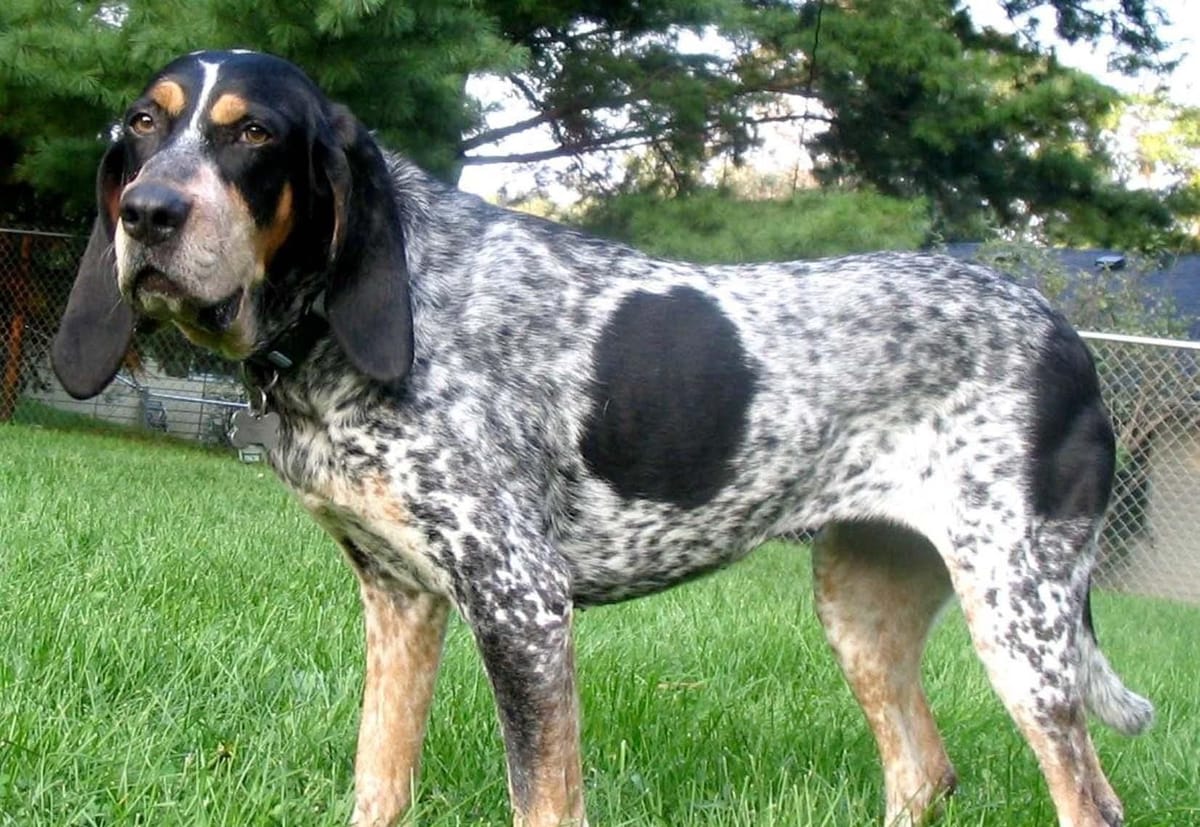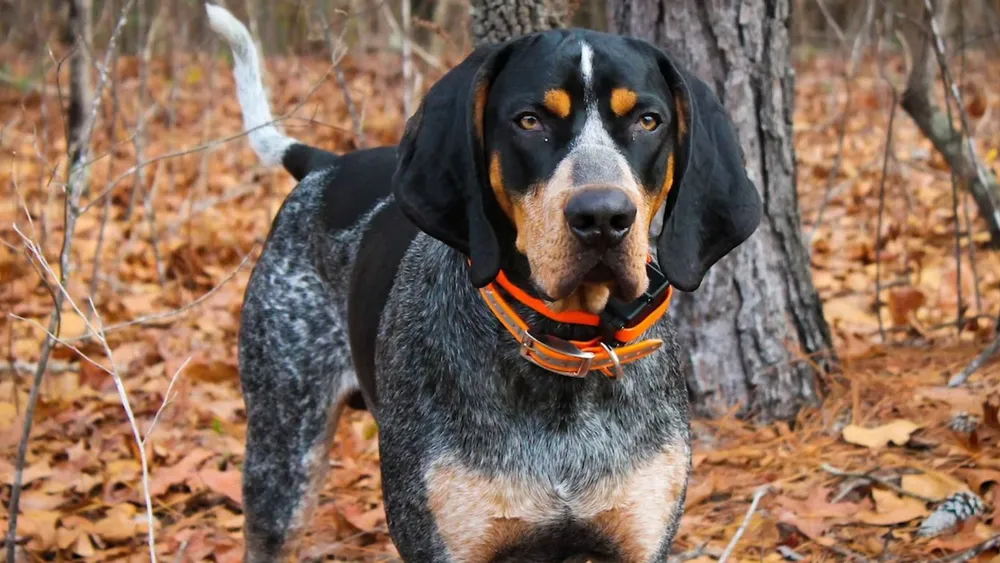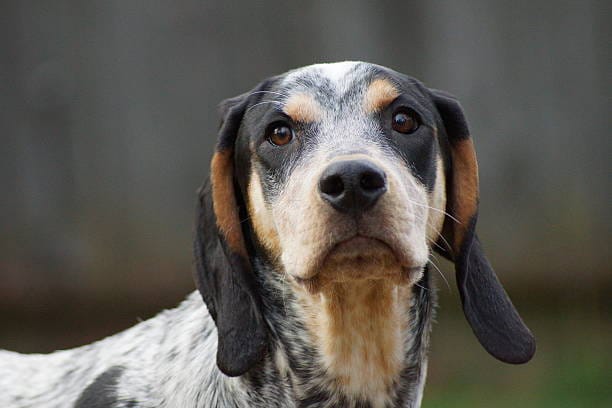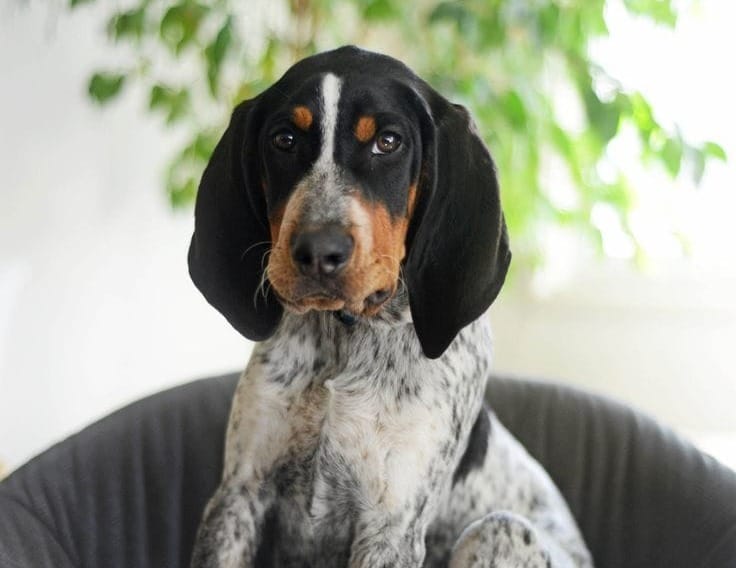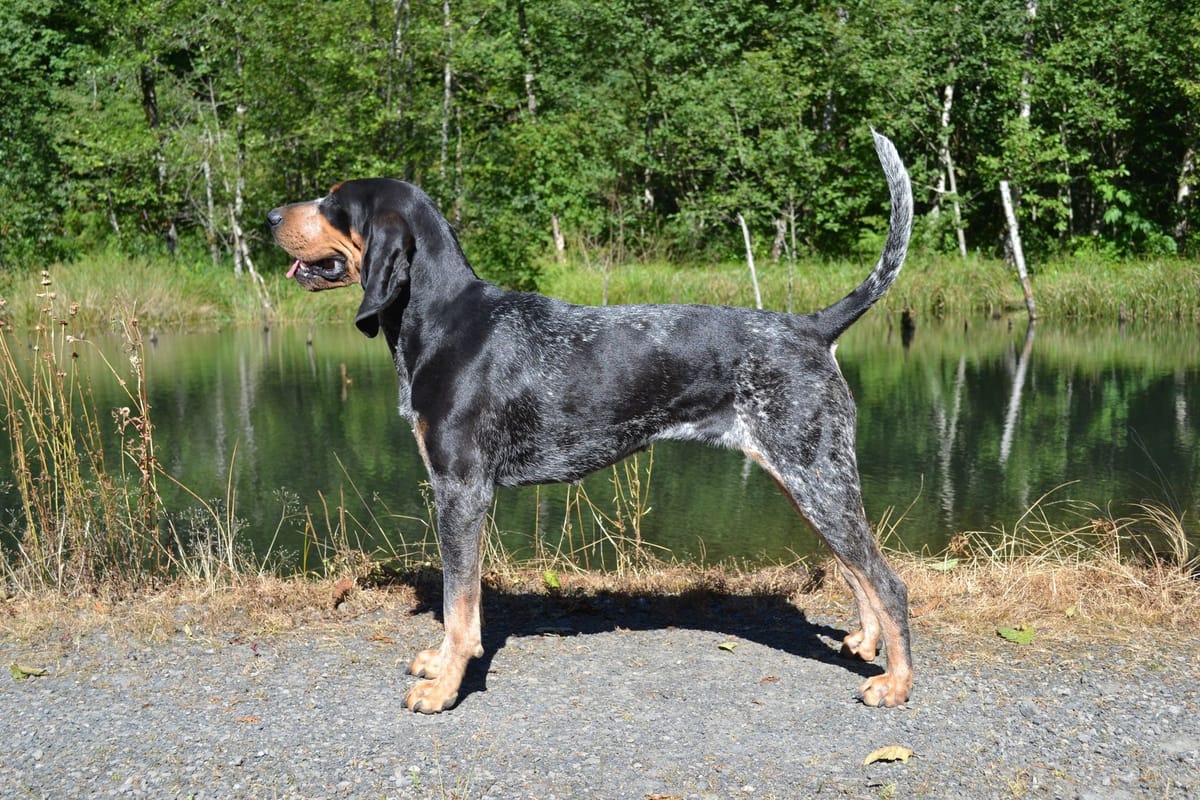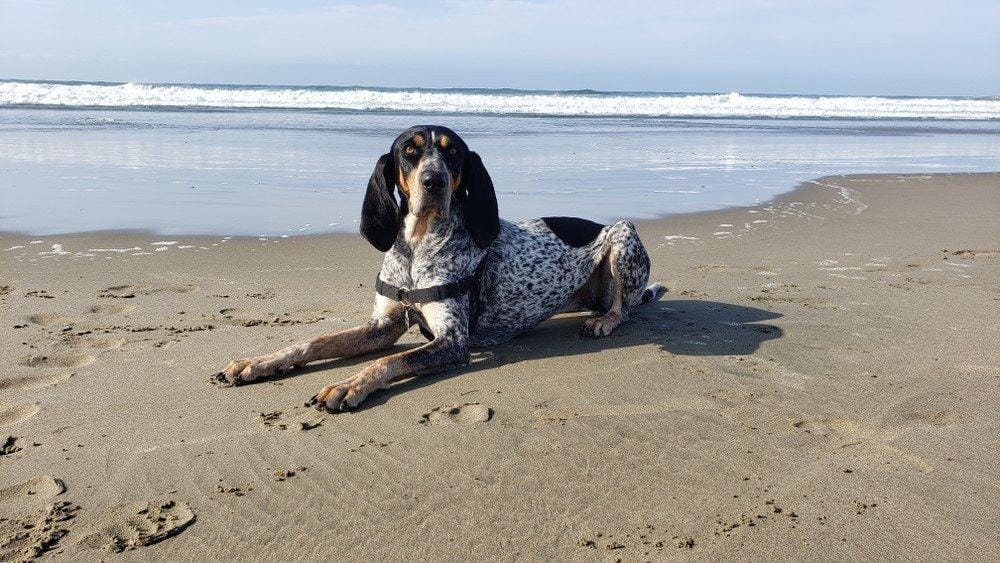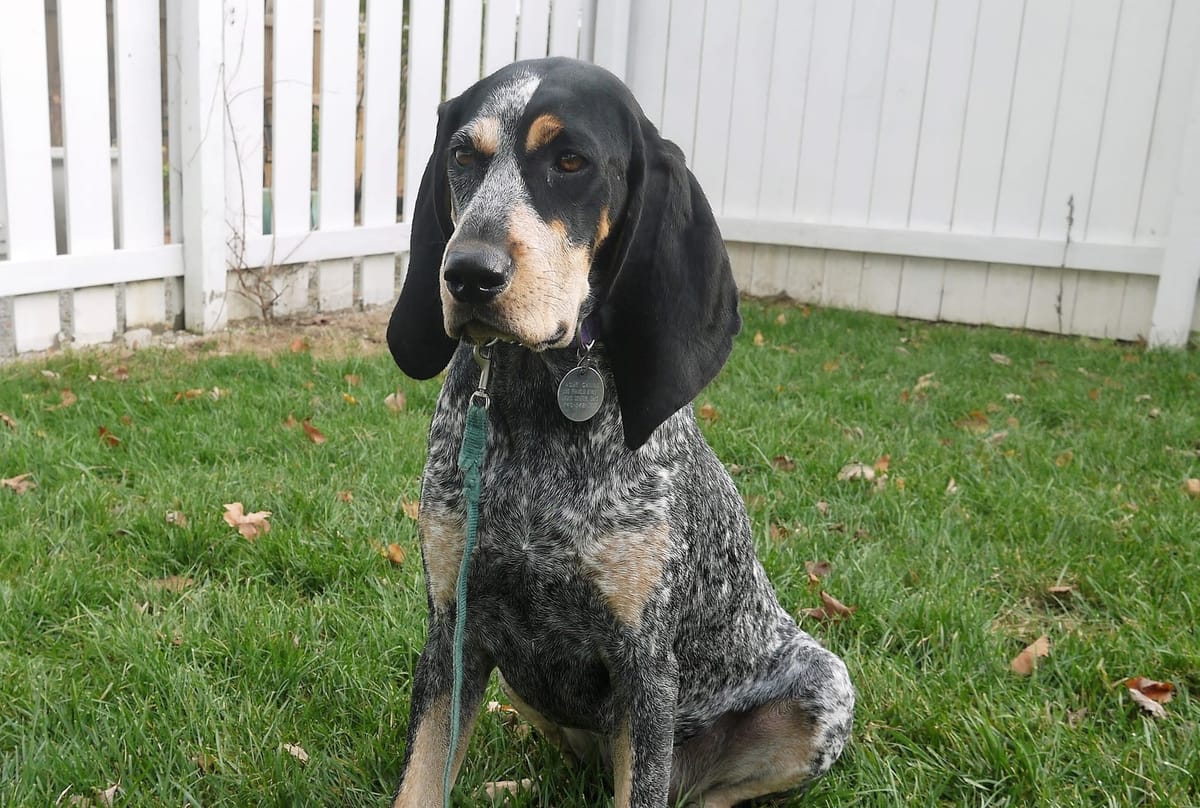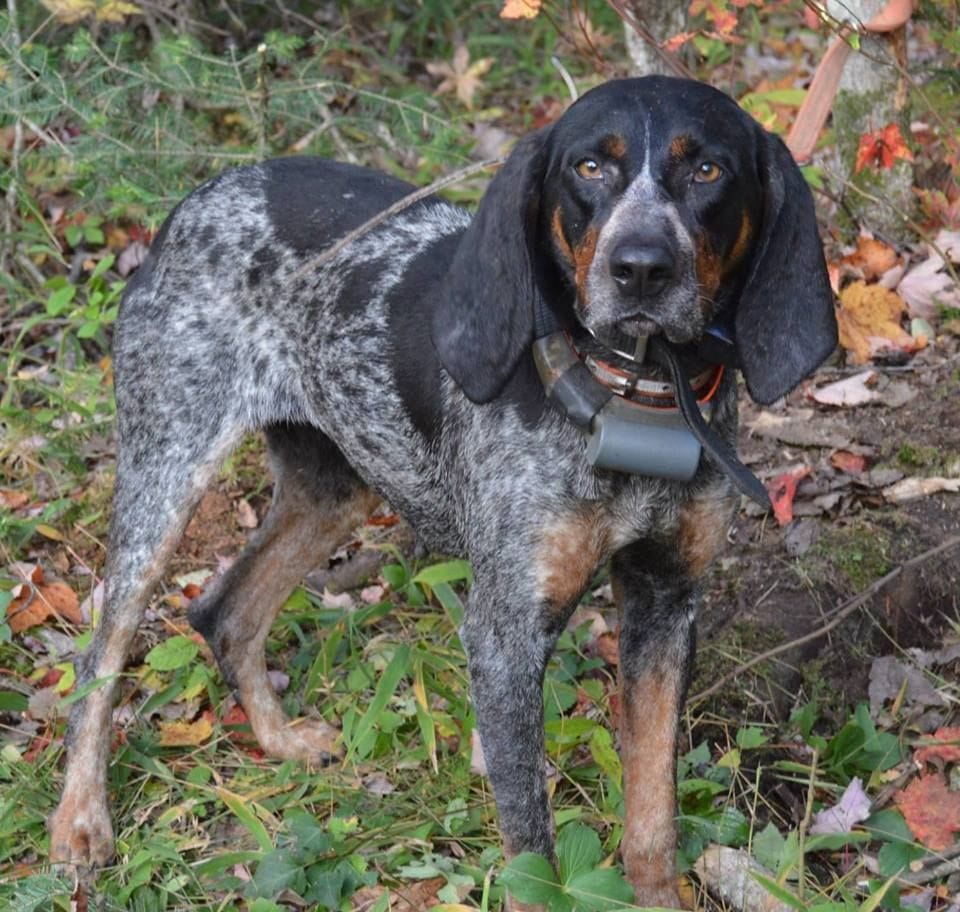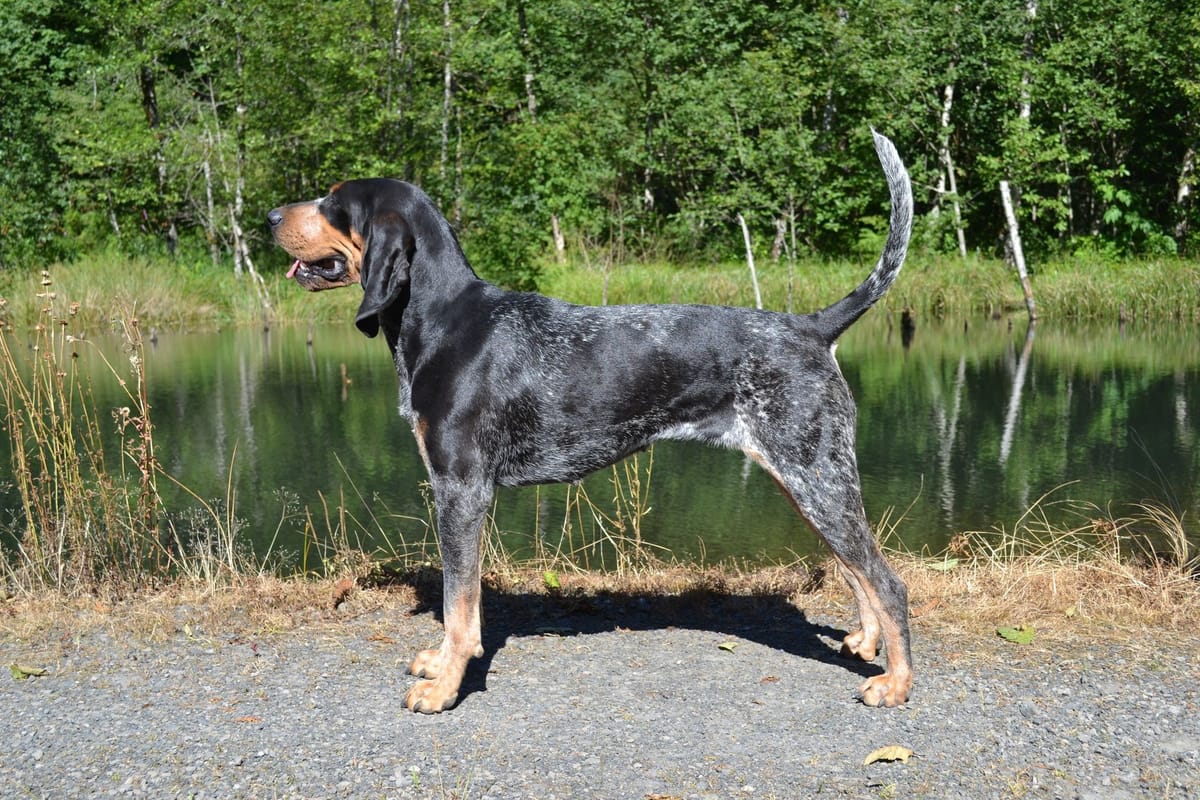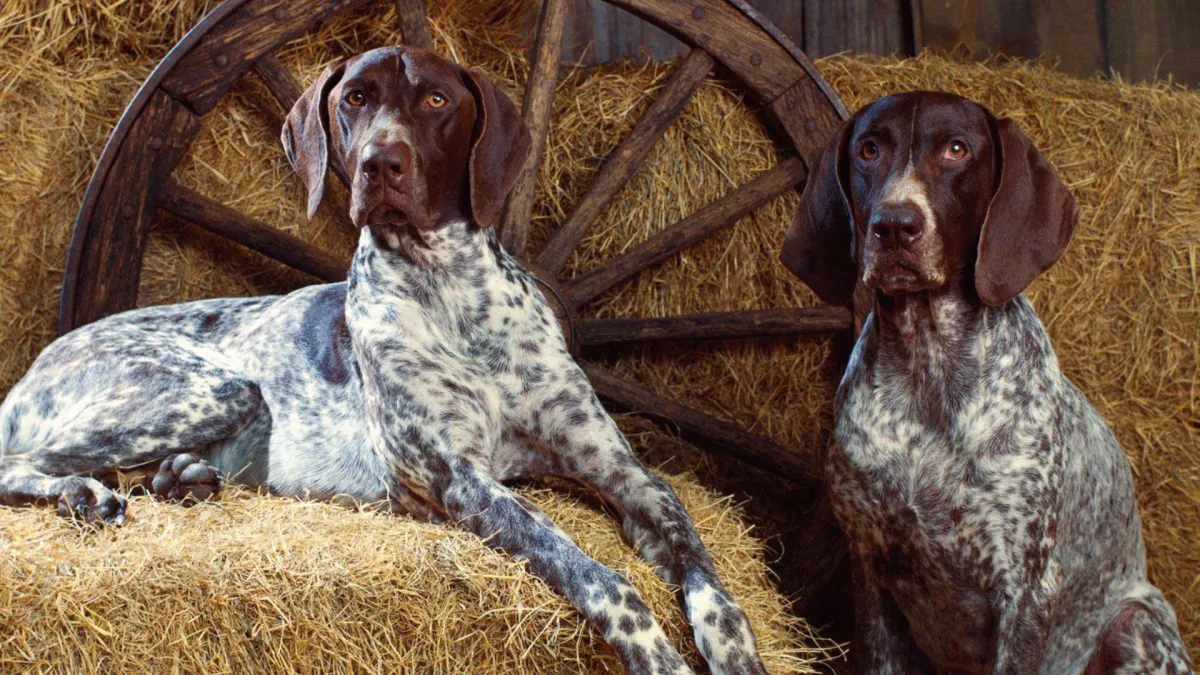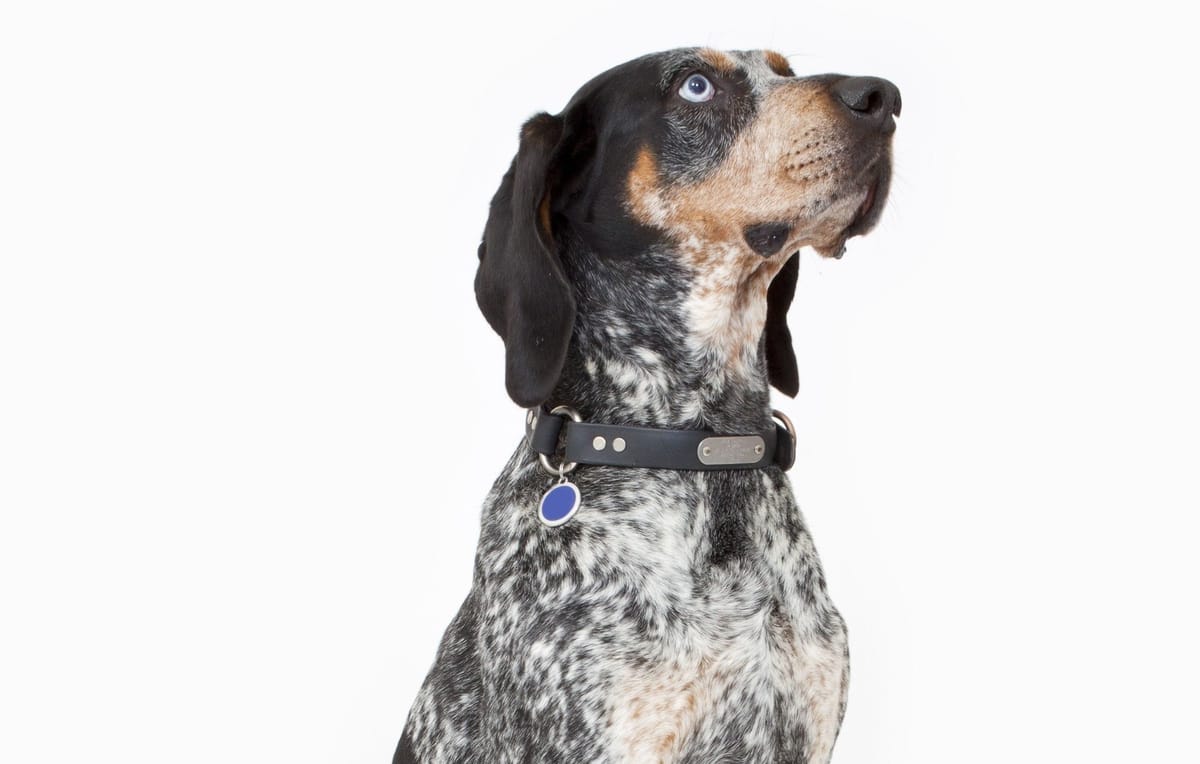If you're a dog enthusiast or simply in search of a new furry friend, the Bluetick Coonhound might just steal your heart. In this article, we'll delve into the captivating world of Bluetick Coonhounds, exploring their origin, distinctive features, temperament, and much more. So, buckle up, dog lovers, as we embark on a journey to unravel the charm of these fascinating canines.
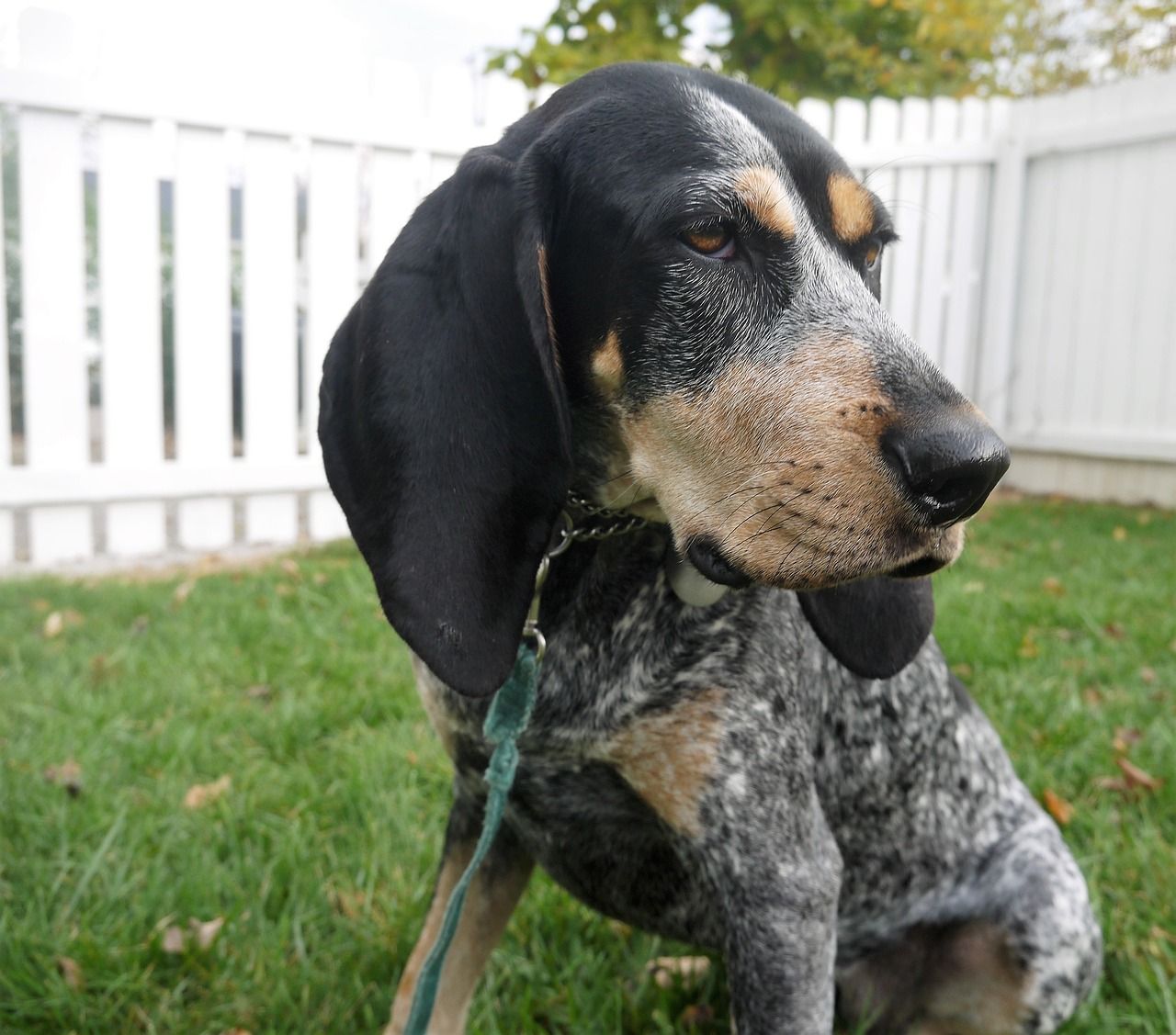
Origin and History
Bluetick Coonhounds have a rich history deeply rooted in the United States. Originally bred for their tracking and hunting prowess, these dogs boast a lineage that dates back generations. The breed's development was influenced by various European hound breeds, resulting in the unique characteristics we see today.
Distinctive Appearance
Alright, buckle up, dog enthusiasts! We're about to dive into the fashion-forward world of Bluetick Coonhounds, where style meets substance in the most distinctive way possible.
The Iconic Blue Ticking Pattern
Picture this: a sleek, glossy coat that's not just a coat—it's a statement. Bluetick Coonhounds are renowned for their unique blue ticking pattern, which gives them an appearance that's nothing short of spectacular. Each little speck of blue is like a fashion accessory, making these dogs runway-ready in the canine world.

Sleek Build and Expressive Eyes
Beyond the blue ticking, Bluetick Coonhounds have a silhouette that's both athletic and elegant. Their sleek build isn't just for show; it's a testament to their agility and hunting prowess. And those eyes—deep, soulful, and oh-so-expressive—add a touch of mystery to their overall charm. It's like they have a secret they're just itching to share with you.
Easily Recognizable
Ever been strolling through the park and spotted a dog that made you do a double-take? Chances are, it was a Bluetick Coonhound. Their distinctive appearance makes them easily recognizable, and trust me, once you've seen one, you won't forget it. It's like meeting a celebrity in the world of canines.
Now, let's talk temperament because these dogs are more than just a pretty face.
Temperament and Personality:
If you're looking for a sidekick that's not only stylish but also has a heart of gold, the Bluetick Coonhound might just be your soulmate.
Friendly, Loyal, and Full of Vibes
Imagine a friend who's always up for an adventure, ready to explore the world with you. That's the Bluetick Coonhound. Their friendly nature makes them the life of the party, and their loyalty is the stuff of legends. Whether you're chilling on the couch or embarking on a grand expedition, these dogs are down for whatever, as long as it's with you.
Hunting Instinct with a Heart of Gold
Sure, they have a hunting background, but don't let that fool you into thinking they're all serious business. Bluetick Coonhounds manage to balance their hunting instincts with a heartwarming affection that melts even the toughest of hearts. It's like having a superhero who's both badass and a total sweetheart.
Family-Friendly Companions
Here's the deal: Bluetick Coonhounds aren't just companions; they're family. Their adaptability and patience make them fantastic with children, turning them into the ultimate family dogs. From playtime in the yard to lazy Sunday afternoons, they seamlessly blend into the rhythm of family life.
Eager to Please and Smart as a Whip
Training a Bluetick Coonhound is less of a task and more of a joy. These dogs are not just eager to please; they're practically raising their paws and saying, "What's next?" Their intelligence makes training sessions a breeze, and the bond you build with them is like having a furry genius by your side.
Intelligence and Training
Alright, fellow happy dog enthusiasts, get ready to be impressed because we're diving into the genius zone of Bluetick Coonhounds. These dogs aren't just charming; they're brainiacs in fur coats.
Einstein-Level Intelligence
Ever wondered what it's like to have a dog that not only understands but seems to contemplate life's mysteries? That's the Bluetick Coonhound for you. Their intelligence level is off the charts. From grasping new commands in a flash to figuring out puzzle toys with Sherlock-like precision, these dogs are the Einsteins of the canine world.
Training? Bring It On!
Training a Bluetick Coonhound is less like teaching and more like collaborating with a genius partner. They're quick learners, which means you can introduce them to a repertoire of tricks that will leave your friends and neighbors in awe. Just grab some treats, cue the upbeat training music, and watch your Bluetick shine.
Charm and Cooperation
Here's the secret sauce: Bluetick Coonhounds aren't just smart; they're cooperative to the core. They thrive on positive reinforcement, and the bond you build during training sessions is like a partnership where you both win. It's not about who's in charge; it's about creating a dynamic duo that conquers the training world together.
Exercise Needs
If you're the type who loves a good outdoor adventure, you're in for a treat because Bluetick Coonhounds are the Energizer Bunnies of the dog world. They're not just into exercise; they're practically aficionados of the active life.
Energetic to the Core
Picture this: a dog that wakes up ready to tackle the day like it's the greatest adventure ever. That's the Bluetick Coonhound. Their energy levels are impressive, and if you're into jogging, hiking, or just an afternoon game of fetch, these dogs are your ideal partners in crime.
Mental Stimulation Matters
It's not just about physical exercise; Bluetick Coonhounds need mental stimulation too. Puzzle games, interactive dog toys, and even a bit of agility training—anything that engages their minds is fair game. Keep them mentally sharp, and you'll have a happy, content canine companion by your side.
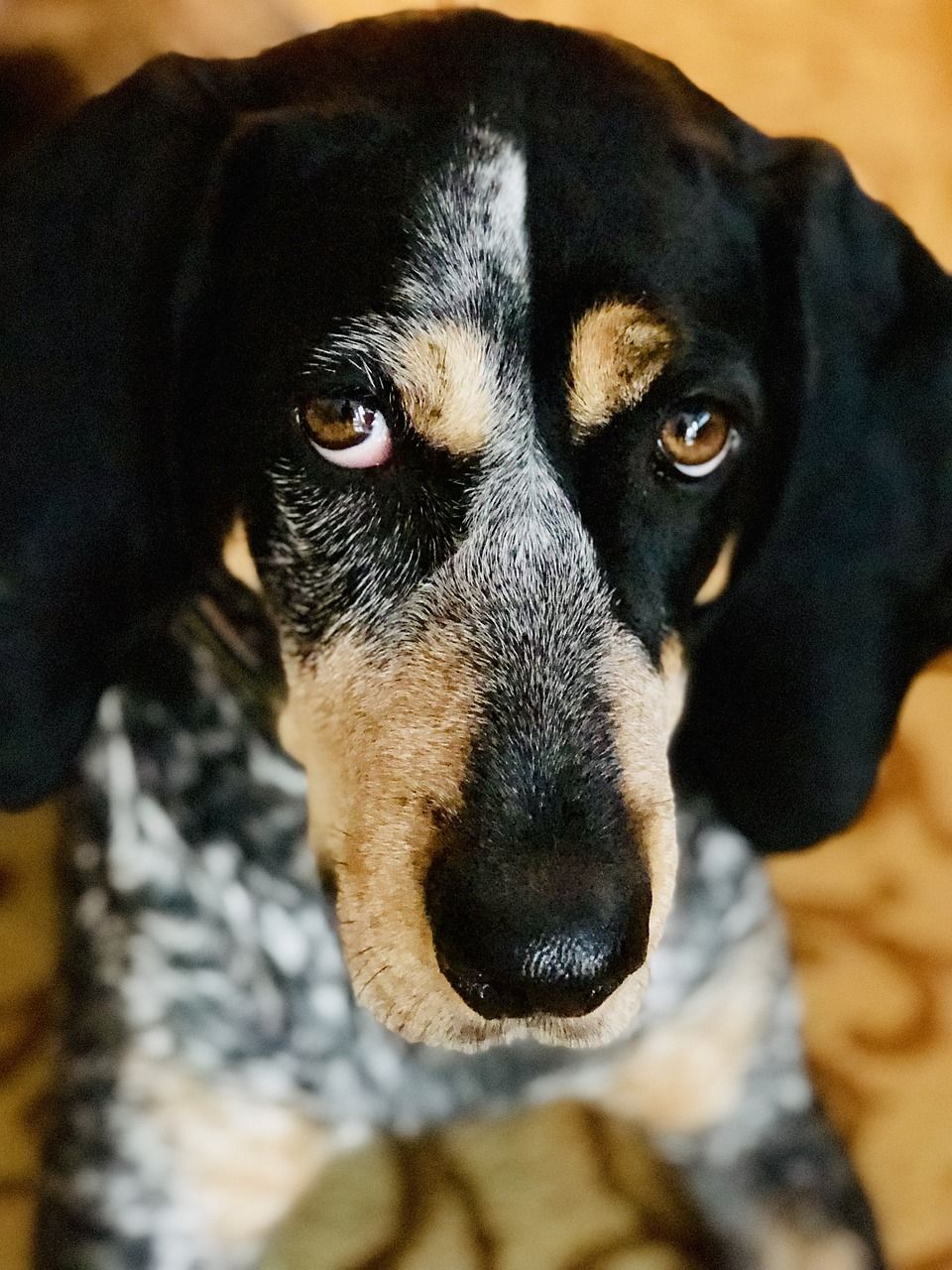
Adventures Await
If you're someone who loves exploring the great outdoors, a Bluetick Coonhound will be your trusty sidekick. From nature trails to beach outings, these dogs thrive on variety. So, gear up, grab a leash, and get ready for adventures that will create memories to last a lifetime.
Health Considerations
While Bluetick Coonhounds are robust and energetic, like any breed, they have their share of health considerations. Knowing what to watch out for and adopting a proactive approach is key to ensuring your furry friend's well-being.
Common Health Issues
Bluetick Coonhounds may be sturdy, but they can be prone to certain health issues, including hip dysplasia and ear infections. Regular veterinary check-ups are crucial to catch any potential concerns early on. Responsible ownership involves staying informed about the breed's specific health needs.
Nutrition and Exercise Balance
Maintaining a healthy diet and providing regular exercise are foundational to your Bluetick's well-being. A balanced diet, appropriate for their age and activity level, combined with regular exercise, contributes to their overall health and longevity.
Regular Vet Check-Ups
Prevention is the best medicine. Regular vet check-ups ensure that any health issues are detected and addressed promptly. Vaccinations, dental care, and preventive measures against common ailments are part of the proactive approach to your Bluetick's health.
Grooming Tips
Alright, folks, let's talk grooming because even the most stylish dogs need a little pampering to maintain their allure. When it comes to Bluetick Coonhounds, it's not about excessive priming; it's about enhancing their natural charm.
That Distinctive Coat
First things first, let's talk about the showstopper—the coat. The iconic blue ticking pattern is like the haute couture of dog coats. Lucky for you, maintaining it is not as complicated as it looks. A weekly brush to remove loose hair and distribute those stylish specks of blue is all it takes. Think of it as a spa day for your Bluetick.
Nail Care and Dental Hygiene
Now, let's move down to the paws. Regular nail trims keep those claws in check and prevent discomfort during walks or playtime. And don't forget the dental dazzle. Good dental hygiene not only keeps their breath fresh but also contributes to their overall health. A toothbrush and some doggy toothpaste—yes, that's a thing—can make a world of difference.
Bathing 101
The Bluetick Coonhound isn't a diva when it comes to bathing. A bath every few months or as needed is sufficient. But here's the catch—make sure to use a dog-friendly shampoo. No one wants their furry friend smelling like a chemistry experiment gone wrong.
Bluetick Coonhounds as Hunting Companions
Now, let's shift gears to the roots of the Bluetick Coonhound—the hunting grounds. These dogs are not just pets; they're the MVPs of the hunting world, and their skills are nothing short of a symphony.
The Hunter's Instinct
Deep within the DNA of a Bluetick Coonhound lies a hunter's heart. The thrill of the chase, the joy of tracking—it's in their blood. Whether it's pursuing raccoons through the dense woods or sniffing out a scent trail, these dogs are the Mozart of the hunting world, creating a melody of instinct and skill.
Versatility Unleashed
What sets Blueticks apart is their versatility. From treeing raccoons to trailing larger game, these dogs are like the Swiss Army knives of the hunting community. Their ability to adapt to different terrains and game types makes them indispensable to hunters seeking a reliable and tenacious companion.
Family First, Hunter Second
Here's the twist—while they have a history deeply rooted in hunting, Bluetick Coonhounds transition seamlessly from hunter to family member. Their friendly and sociable nature makes them equally adept at being the family's beloved pet and a skilled hunting companion.
Famous Bluetick Coonhounds
Ever heard of a canine celebrity? Well, in the world of Bluetick Coonhounds, there are a few famous faces that have left pawprints on history. These dogs aren't just hunting legends; they're icons in their own right.
Smokey: The Legend Lives On
Think of Smokey as the Elvis Presley of the Bluetick Coonhound world. This legendary hound gained fame for his exceptional tracking skills and unwavering loyalty. His stories have been recounted around campfires and in hunting lodges, making him a true icon of the breed.
Old Blue: Tales of Tenacity
Old Blue isn't just a name; it's a legacy. Known for his tenacity on the hunt, Old Blue became a symbol of the Bluetick's resilience and determination. His stories have been passed down from generation to generation, immortalizing him as a hero in the world of hunting.
Bluetick Coonhound in Popular Culture
Alright, dog aficionados, let's dive into the glitz and glam of the Bluetick Coonhound in popular culture. These dogs aren't just stars in the hunting world; they've made their mark on screens big and small, and their tales have echoed in the pages of best-selling novels.
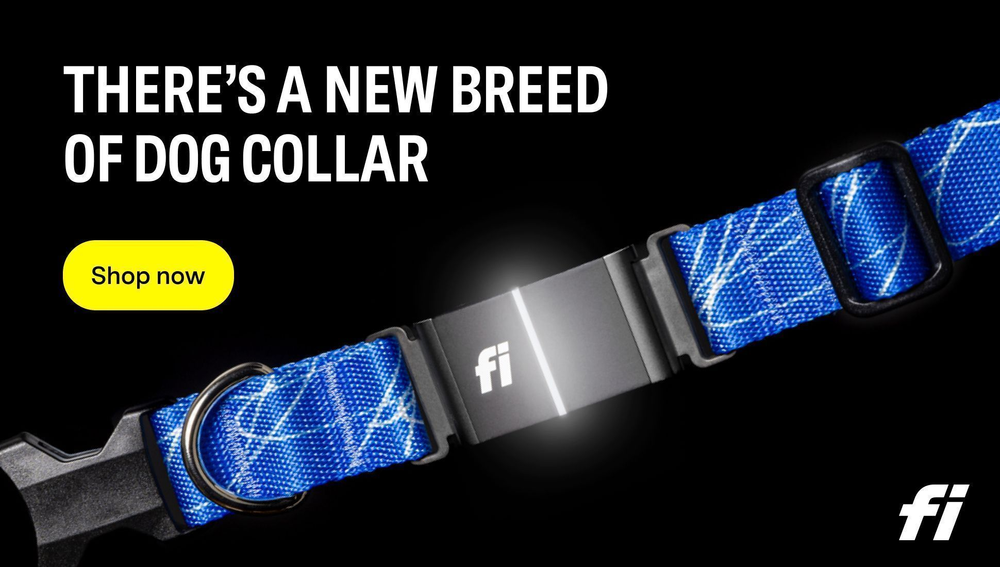
Movie Magic and TV Stardom
Ever watched a movie and thought, "Hey, that dog looks familiar!"? Well, it might just have been a Bluetick Coonhound stealing the show. From heartfelt family films to thrilling adventures, these dogs have graced the silver screen with their charm. "Where the Red Fern Grows" is a tearjerker that stars a Bluetick, and their hunting prowess has been featured in numerous TV shows, making them household names beyond the hunting grounds.
Literary Legends and Best-Selling Novels
But it's not just about moving pictures; Bluetick Coonhounds have also made their presence felt in the world of literature. Authors have woven tales of adventure, loyalty, and the unique bond between humans and Blueticks. These dogs aren't just characters; they're literary legends, leaving pawprints on the pages of best-selling novels.
Common Myths and Misconceptions
Now, let's address the elephant in the room—myths and misconceptions about Bluetick Coonhounds. These dogs might be charming, but they've had their fair share of stories that need a little debunking.
Myth: All Coonhounds Are the Same
Let's clear this up right away. While Bluetick Coonhounds share a coonhound lineage, each color variety—Bluetick, Redbone, Black, and Tan—has its own unique traits. Blueticks are known for their distinctive blue ticking pattern and versatile abilities, setting them apart from their coonhound cousins.
Myth: They're Only Good for Hunting
Sure, Bluetick Coonhounds have a history deeply rooted in hunting, but that doesn't mean they're a one-trick pony. These dogs seamlessly transition into family life, bringing their loyalty and affection to the forefront. They're not just hunting companions; they're versatile, adaptable members of the family.
Myth: They're Too Energetic for Families
Wrong! While they have energy levels that rival a perpetual motion machine, Bluetick Coonhounds are fantastic family dogs. Their friendly nature and love for adventure make them perfect for families who enjoy an active lifestyle. They're not just a bundle of energy; they're a bundle of joy.
Choosing the Right Bluetick Coonhound
So, you're thinking about bringing a Bluetick Coonhound into your life? Fantastic choice! But how do you choose the right one for you? Let's break it down.
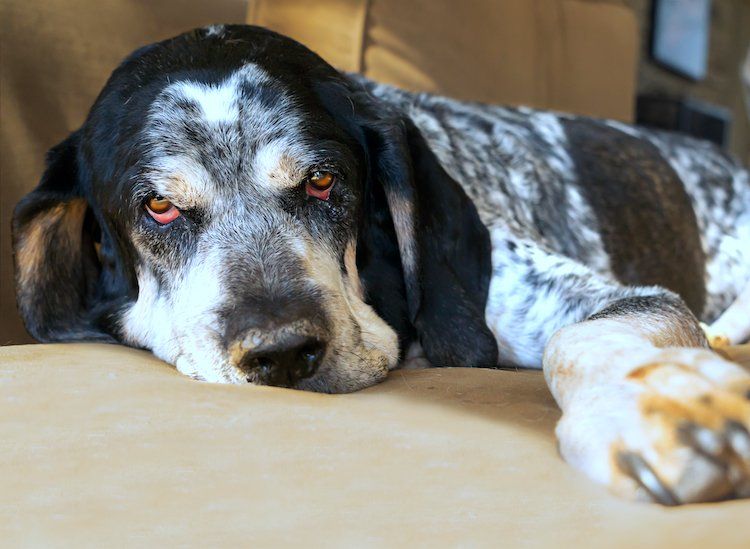
Lifestyle Matchmaking
First things first, consider your lifestyle. Bluetick Coonhounds are active and sociable, so if you're an outdoor enthusiast or a family with kids, you're on the right track. Their versatility allows them to adapt to various living situations, but matching their needs to your lifestyle is key.
Adoption or Purchase?
Whether you're adopting or purchasing, ensure you're doing it from a reputable source. Rescue organizations, shelters, and responsible breeders are your go-to places. Take the time to meet the dog, understand their personality, and see if it aligns with what you're looking for in a furry companion.
Health Check and Background
Like any dog, health is a priority. Ensure the Bluetick you're considering has a clean bill of health. Request health records and inquire about any past medical issues. A healthy start sets the foundation for a happy life together.
Community and Resources
So, you've got your Bluetick, and now you want to join the fan club, right? Good call! There's a whole community out there, ready to share stories, tips, and a love for all things Bluetick.
Online Communities and Forums
The internet is a treasure trove for Bluetick enthusiasts. From dedicated forums to social media groups, there's a community waiting for you. Share your experiences, seek advice, and revel in the camaraderie of fellow Bluetick lovers.
Resources for a Happy Life Together
Whether you're a new Bluetick parent or a seasoned pro, there's always something new to learn. Online resources, breed-specific guides, and expert advice contribute to a happy and fulfilling life with your Bluetick. Stay informed, and you'll be the best pet parent your Bluetick could ask for.
Conclusion
In conclusion, Bluetick Coonhounds are more than just hunting companions; they are bundles of love and loyalty wrapped in a striking coat. Their distinctive appearance, coupled with a friendly disposition, makes them stand out among dog breeds. Whether you're an avid hunter or a family seeking a new member, Bluetick Coonhounds offers a blend of charm and character that is truly irresistible.
Frequently Asked Questions (FAQs)
- Q: Are Bluetick Coonhounds good with children?
- A: Yes, Bluetick Coonhounds are known for their friendly and affectionate nature, making them excellent companions for children.
- Q: How much exercise do Bluetick Coonhounds need?
- A: These dogs are energetic and require regular exercise, including walks, playtime, and mentally stimulating activities.
- Q: Do Bluetick Coonhounds get along with other pets?
- A: With proper socialization, Bluetick Coonhounds can coexist peacefully with other pets in the household.
- Q: What grooming practices are essential for Bluetick Coonhounds?
- A: Weekly brushing, regular nail trimming, and dental care are key grooming practices for Bluetick Coonhounds.
- Q: Where can I find reputable breeders or adopt a Bluetick Coonhound?
- A: Reputable breeders, rescue organizations, and shelters are good places to start when looking to adopt or purchase a Bluetick Coonhound.
More Bluetick Coonhound articles:
